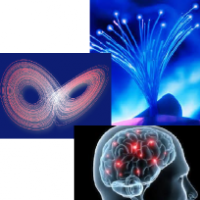WorkPackage 1:
Numerics, theory, and modeling of delay-based photonic RC
Led by J.-P. Ortega / Bruno Saussereau, partner LMB (P2)
Objectives:
Develop simulations tools in close collaboration with the experimental RC architectures (P1) and the targeted applications (Fuel cell systems, P3; Femtosecond laser machining, P1).
Provide insights on how to optimize the RC systems optimization for efficient computing capabilities.
Contribute to the interfacing, physical signal analysis, appropriate encoding of the data to be processed by the RC system, and appropriate decoding of the RC computed output results.
WorkPackage 2:
Experimental RC demonstrators
Led by L. Larger, Partner FEMTO-ST / OPTO group (P1)
Objectives:
Explore photonic RC architectures providing potentially high speed processing capability which can be compatible with a real time computing for demanding applications.
Explore digital implementations (i.e. FPGA electronic board) of the delay-based architecture for RC. This approach can be suited to less demanding real time applications (such as fuel cell systems) and will benefit from an easy, low cost, and high reconfiguration capability of the physical implementation.
WorkPackage 3:
Real-world applications
Led by M.-C. Péra, partner FCLAB (P3)
Objectives:
Two applications are foreseen for being addressed by a RC processor:
- A fuel cell system for which a RC processing of its electrical outputs are expected to provide a monitoring of its internal state of health (fast detection of various faulty conditions, diagnostic); This corresponds to a classification of the internal state of the fuel cell system); in a second possible research direction, the RC system might be used to forecast, sufficiently in advance, a future degradation of the fuel cell system with the present use (prognostic);
- A fs laser machining system, for which a RC system is expected to provide a real time feedback correction for the laser beam phase profile through a spatial light modulator, and from the analysis (by the RC system) of the 2D image of the beam focusing conditions.
For each application, the available signal will need to be pre-processed and encoded so that a RC system can perform the computing task capable for providing the expected answer. This answer will need to be decoded, and exploited for each practical real world application, according to the actual constrains.

